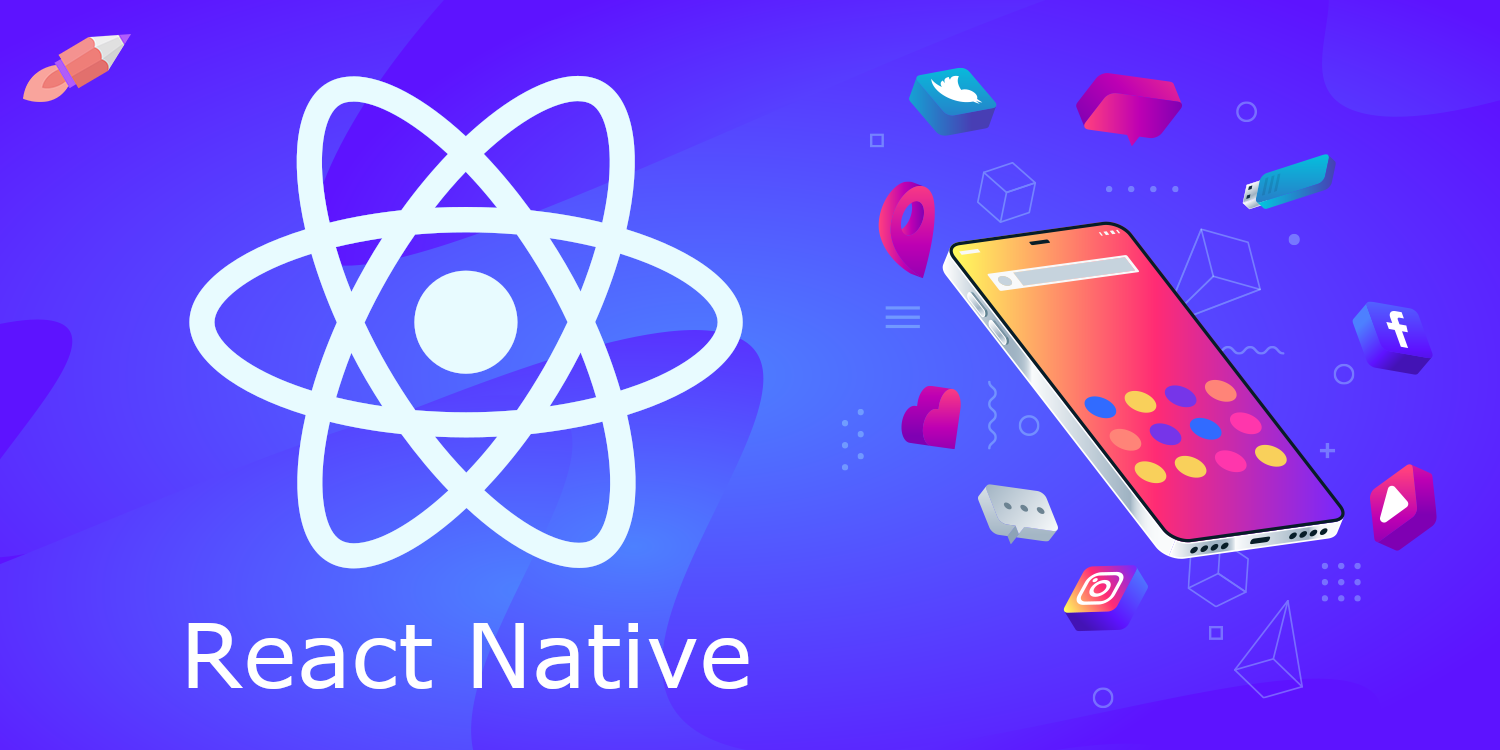
As a React Native developer, one of the first decisions you’ll make is choosing the right integrated development environment (IDE) to suit your needs. An IDE is a crucial tool that can greatly impact your productivity and efficiency as a developer. In this comprehensive blog post, we’ll explore the top IDEs for React Native development, outlining their features, benefits, and potential drawbacks. By the end, you should have a clear understanding of which IDE is the best fit for your React Native projects.
What is React Native?
Before we dive into the IDEs, let’s quickly understand what React Native is and why it has become a popular choice for mobile app development. React Native is an open-source mobile application framework created by Facebook. It allows developers to use JavaScript to build native mobile apps for both iOS and Android platforms. With React Native, you can create truly native apps with a native look and feel, all while using a single codebase, which makes it a cost-effective and time-saving solution.
Why Choose the Right IDE?
An IDE is much more than just a text editor. It provides a comprehensive set of tools and features that streamline the development process, making it faster and easier to write, debug, and deploy code. The right IDE can improve your productivity, enhance your coding experience, and even help you write better code. It provides a centralized environment for all your development tasks, from writing and editing code to debugging and testing.

Factors to Consider When Choosing an IDE:
When selecting an IDE for React Native development, there are several factors to keep in mind:
- Compatibility: Ensure that the IDE supports React Native development and is compatible with the programming languages and tools used in the React Native ecosystem, such as JavaScript, TypeScript, JSX, and Node.js.
- Feature Set: Look for an IDE that offers a rich set of features like syntax highlighting, code completion, debugging tools, integrated version control, and support for extensions or plugins. These features will enhance your productivity and make your development experience smoother.
- Performance: Choose an IDE that is known for its speed and performance. A slow and laggy IDE can hinder your productivity and cause frustration. Look for an IDE with efficient code editing, fast startup times, and responsive debugging tools.
- Community and Support: Opt for an IDE with an active and supportive community. A robust community means that you’ll have access to a wealth of resources, plugins, and extensions developed by other users. Additionally, a responsive support system ensures that you can get help when you encounter issues or bugs.
- Ease of Use and Customization: The IDE should have an intuitive and user-friendly interface, making it easy to navigate and use its various features. It should also allow for customization so you can tailor the IDE to your specific needs and preferences.
- Price: Finally, consider your budget. While there are excellent free and open-source IDEs available, some commercial IDEs offer additional features and support that may be worth the investment, depending on your requirements.
Popular IDEs for React Native Development:
Now that we’ve outlined the factors to consider, let’s explore some of the best IDEs for React Native development:
- Visual Studio Code:
- Visual Studio Code, commonly known as VS Code, is a free and open-source IDE that has gained immense popularity in the developer community. It offers a rich set of features, including syntax highlighting, intelligent code completion, built-in Git support, and a wide range of extensions.
- VS Code has excellent support for React Native development, with features like code debugging, IntelliSense for JavaScript and TypeScript, and a built-in terminal. There is also a large community of React Native developers who contribute extensions and plugins specifically for VS Code.
- One of the key advantages of VS Code is its speed and performance. It has a lightweight and fast interface, ensuring a smooth development experience. Additionally, VS Code is highly customizable, allowing you to modify the theme, keyboard shortcuts, and various settings to suit your preferences.
- When it comes to community and support, VS Code excels in this area. It has an active and helpful community, with a wealth of online resources, tutorials, and a responsive support system.
- Overall, VS Code is an excellent choice for React Native development, offering a balance of features, performance, and customization.
- Android Studio / IntelliJ IDEA:
- Android Studio is the official integrated development environment for Android application development, and it also has excellent support for React Native. It is based on IntelliJ IDEA, a popular Java integrated development environment (IDE) from JetBrains.
- One of the key advantages of using Android Studio for React Native development is its deep integration with the Android ecosystem. If you’re primarily focused on building Android apps with React Native, Android Studio provides a seamless experience. It offers features like code editing assistance, debugging tools, and a built-in emulator for testing your apps.
- Android Studio provides robust support for JavaScript and TypeScript, with features like code completion, refactoring, and error checking. It also has a built-in terminal and a powerful debugger that allows you to set breakpoints, inspect variables, and step through your code.
- Additionally, Android Studio has a large and active community, with a wealth of plugins and extensions available. It also provides strong support for working with Gradle, the build automation system used in Android development.
- While Android Studio is primarily focused on Android development, it can also be used for iOS app development with React Native, although the experience may not be as seamless as with dedicated iOS development tools.
- Xcode:
- Xcode is Apple’s integrated development environment for macOS, used for developing software for macOS, iOS, iPadOS, watchOS, and tvOS. If your primary focus is on building iOS apps with React Native, Xcode is an excellent choice.
- Xcode provides a comprehensive set of tools for iOS development, including a source code editor, a UI designer, a debugger, and a built-in iOS simulator. It has deep integration with the iOS ecosystem, making it easy to build, test, and deploy iOS apps.
- One of the key advantages of using Xcode for React Native development is its excellent support for Swift, Apple’s programming language for building iOS apps. If your React Native project includes native code written in Swift, Xcode will provide a seamless development experience.
- Xcode also offers features like code completion, syntax checking, and live issues reporting, helping you catch errors and potential problems early in the development process. It also has a robust debugging tool, allowing you to inspect variables, set breakpoints, and step through your code line by line.
- While Xcode is a powerful tool, it is important to note that it is primarily designed for iOS development. If you’re building apps for both iOS and Android, you may need to consider using additional tools or IDEs to cater to the Android platform.
- WebStorm:
- WebStorm is a commercial JavaScript IDE developed by JetBrains, the company behind IntelliJ IDEA and Android Studio. It is a feature-rich IDE that provides an excellent development experience for React Native projects.
- One of the standout features of WebStorm is its intelligent code assistance. It offers code completion, refactoring, and on-the-fly error detection for JavaScript, TypeScript, HTML, and CSS. It also has built-in support for React and React Native, providing code completion for React-specific syntax and props.
- WebStorm has a powerful built-in debugger that allows you to set breakpoints, inspect variables, and step through your code. It also integrates with popular debugging tools like Chrome DevTools, making it easier to debug your React Native apps.
- The IDE provides seamless integration with popular version control systems like Git, making it easy to manage and track changes in your projects. It also has a built-in terminal, so you can perform various development tasks without leaving the IDE.
- WebStorm offers a 30-day free trial, after which you’ll need to purchase a license to continue using it. While it is a commercial product, the rich set of features and excellent support from JetBrains make it a worthwhile investment for professional developers.
Conclusion:
Choosing the right IDE for React Native development depends on various factors, including your specific needs, preferences, and the nature of your projects. We’ve explored some of the best IDEs available, each with its unique strengths and features.
Visual Studio Code offers a balance of features, performance, and customization, making it a popular choice for React Native developers. Android Studio and Xcode provide deep integration with their respective ecosystems, making them ideal choices if you’re primarily focused on building apps for Android or iOS. Lastly, WebStorm stands out with its intelligent code assistance and robust debugging tools, although it comes with a price tag.
Ultimately, the best IDE is the one that enhances your productivity, provides a smooth development experience, and suits your personal preferences. Don’t be afraid to experiment with different IDEs and find the one that works best for you and your React Native projects.
Happy coding!





Leave a Reply